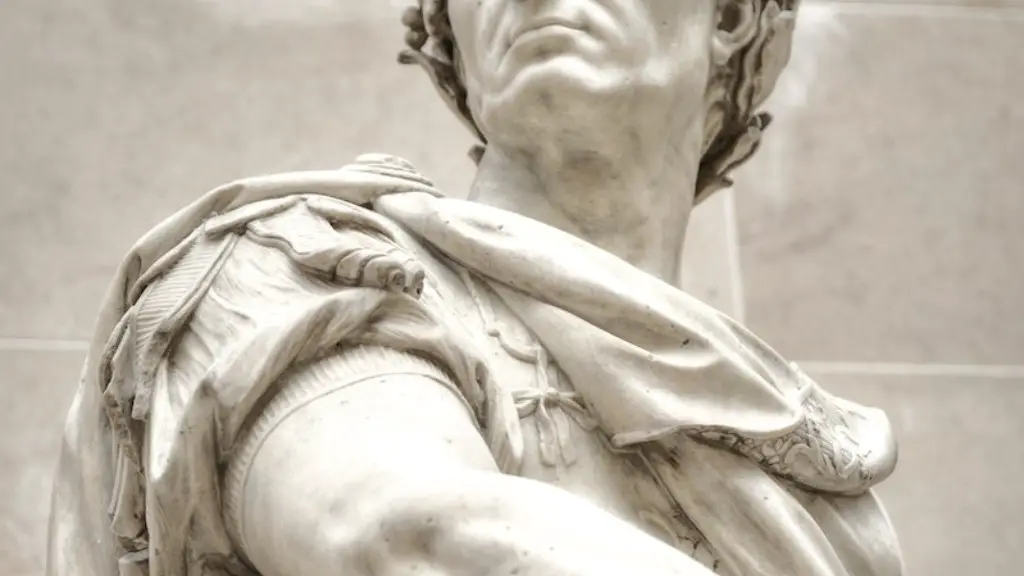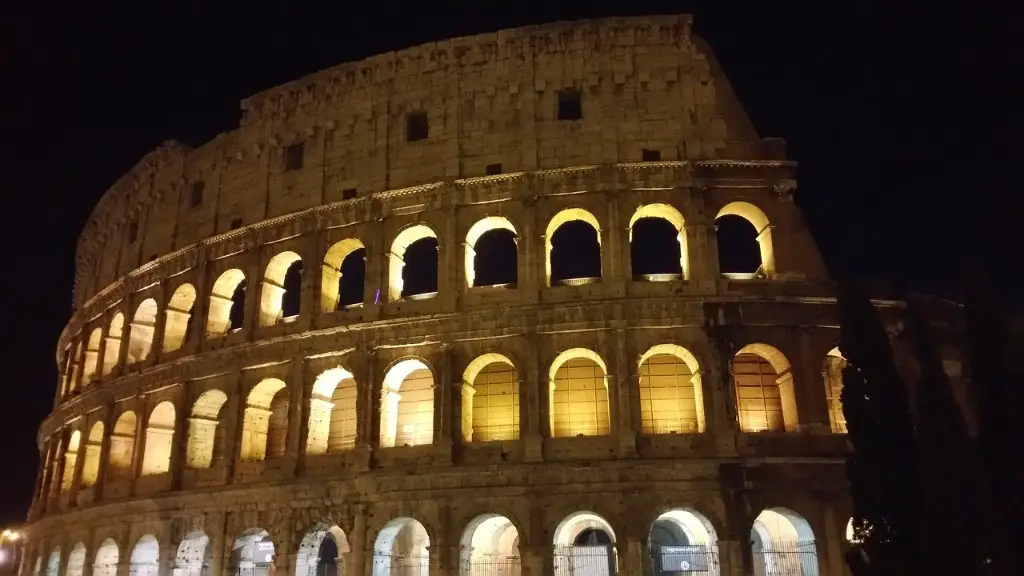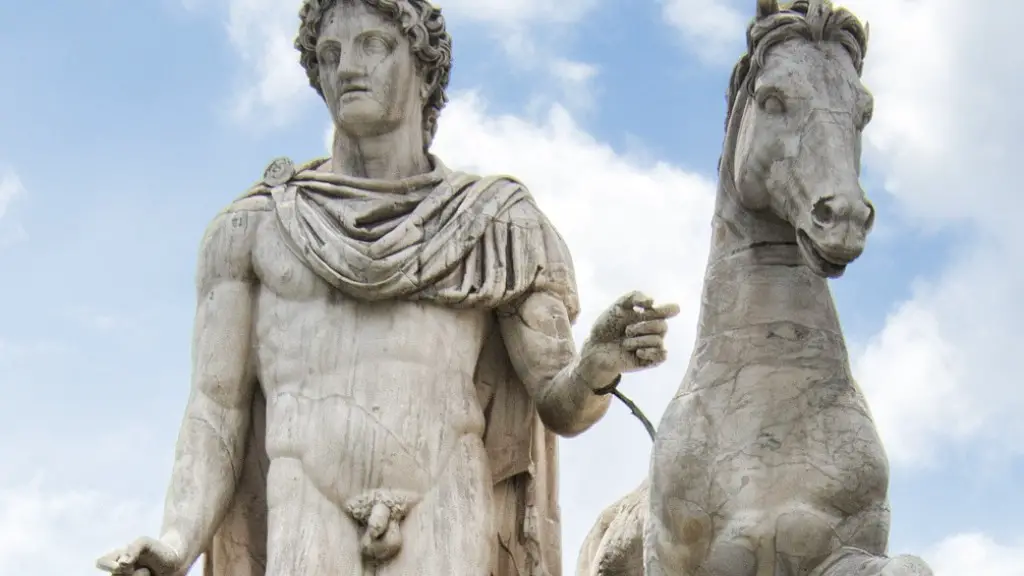The ancient Romans were masters of engineering and construction. They built some of the most impressive structures in the world, including the Colosseum and the aqueducts. One of their most impressive feats was the construction of arches. The ancient Romans used a variety of techniques to build their arches, which were essential for the stability of their structures. In this paper, we will explore how the ancient Romans built their arches and the engineering principles that they used.
The ancient Romans built arch bridges using a technique called opus caementicium, which involved layering stones and concrete. This allowed them to create structures that were both strong and lightweight. The arch bridges built by the Romans were some of the most durable and longest lasting in history.
How did Romans make arches?
Roman arches are one of the most iconic and recognizable features of Roman architecture. They were originally made of various types of stone, usually marble, but later they began to use bricks and concrete, which enabled them to mass produce these structures. Today, Roman arches can be made of metal, concrete, or other hard materials.
The arch is an important feature of Roman architecture. It is used in aqueducts, bridges, and many monumental structures like amphitheaters and stadiums. The Romans didn’t create the arch, but they perfected its use in their constructions.
How did Romans build arch bridges
The arch was a key element in Roman bridge construction, used to span the Tiber River which was approximately 100 m wide. The arches were composed of voussoir blocks, which were faced with ashlar blocks (tuff, travertine) and had a concrete rubble core. This design allowed the bridges to span a large distance with a relatively small amount of material.
The Roman arch was a key development in the history of architecture, and its influence can be seen in many of the world’s most iconic buildings. The arch allowed the Romans to build bigger and better structures, such as roads and aqueducts, and their architectural mastery soon spread across the ancient world. The Roman arch is the ancestor of many modern architectural features, and its legacy can still be seen today.
What were Roman arches made out of?
The arch is one of the most important inventions in architecture, and the Romans were masters at using them in their construction. They used three main materials when building arches: stone, concrete, and brick. Each has its own benefits and drawbacks, but all three are incredibly strong and have stood the test of time.
Arches are one of the most strong and stable structures used in architecture and engineering. The shape of an arch is what gives it its strength, as the downward force from the top of the arch is carried along the curving form all the way to the base. At the same time, the ground pushes up with equal force, creating a stable structure.
What type of arch did the Romans use?
The Roman arch is a remarkable feat of engineering that has its origins in the humble corbel arch. In order to span longer distances without using as many support pillars, the Romans perfected the Roman arch. The Roman arch can span and support great distances, enabling the Romans to build grandiose structures such as domes and aqueducts.
A triumphal arch is a monumental structure in the shape of an archway with one or more arched passageways, often designed to span a road. Triumphal arches were erected throughout the Roman Empire from the early Imperial period onwards and are one of the most recognizable examples of Roman architecture. Many surviving arches date from the Imperial period, when they were often erected to commemorate a military victory or other significant event.
Who first built an arch
Arches are a type of architectural feature that has been used for thousands of years. The first recorded use of arches was in Mesopotamian brick architecture, and they were later adopted by the ancient Romans. The Romans were the first to use arches extensively in their buildings, and they became a signature feature of Roman architecture. Arches are used in a variety of structures, from bridges to aqueducts, and they can add a touch of elegance to any building.
Old Roman arches were built with a type of concrete that was very strong and durable. This concrete was made from a mixture of volcanic sand and lime, and it was able to support a lot of weight. This allowed people to build aqueducts and other types of buildings that were larger and more varied in size.
How did Romans build arches for aqueducts?
The Roman aqueducts are a testament to the engineering prowess of the ancient Romans. These sophisticated water delivery systems were made possible by the use of a mixture of stone, brick and a volcanic cement known as pozzolana. This innovative substance allowed the aqueducts to stay strong and many are still standing today.
Builders first had to create wooden arches in exact measurements as a finished bridge. They then used that wooden construction as a container for stones and another substance that enabled the Roman Empire to become such an architectural force – mortar. They were the first civilisation on earth to discover that mortar could be used to hold structures together.
How is an arch constructed
An arch is a structure that is constructed in a curved shape using wedge-shaped units. These units are jointed together using mortar, and they are provided at openings to support the weight of the wall above the arch and other superimposed loads.
The triangle is the strongest shape as it holds its shape and has a strong base and support. The triangle is common in all sorts of building supports and trusses, and the overall shape of many bridges is in the shape of a catenary curve. This makes the triangle a very strong and versatile shape, which is why it is so commonly used in construction.
What is the weakest part of an arch?
The weakest part of the foot is the joint between the talus and navicular. This portion is braced by the plantar calcaneonavicular ligament, which is elastic and is able to quickly restore the arch to its pristine condition when the disturbing force is removed.
The segmental arch is one of the strongest Testament arches because it is able to resist trust. To prevent failure, a segmental arch must have a rise that is equal to at least one-eighth the width of the span.
Did Romans use pointed arches
The arch is one of the oldest and most common structures in architecture. Arches have been used for centuries to support a variety of structures, from buildings to bridges. The basic idea behind an arch is that it transfers the weight of the structure above it downward and outward into the ground, creating a stable and strong support. The arch has evolved over time, with different cultures developing their own unique variations. Ancient arches were often rounded, as in the case of the Roman arch, though other ancient cultures used pointed arches. Today, there are many different types of arches used in architecture, each with its own advantages and disadvantages.
Constantine I was the first Roman emperor to convert to Christianity, and the Arch of Constantine is a triumphal arch in Rome dedicated to his memory. The arch was built in 315 AD, and is a good example of Early Christian architecture.
Conclusion
The ancient Romans were able to build such incredible arches by using a unique construction technique that is still used today. The technique, known as the false Arch technique, involves constructing a temporary wooden arch over the opening that needs to be spanned. The wooden arch is then removed and replaced with a permanent stone arch.
The ancient romans were excellent engineers and their use of the arch was a key factor in their success. The arch allowed them to build structures that were both strong and elegant. Today, we continue to use the arch in our own architecture, and it remains one of the most popular and important structural elements.




